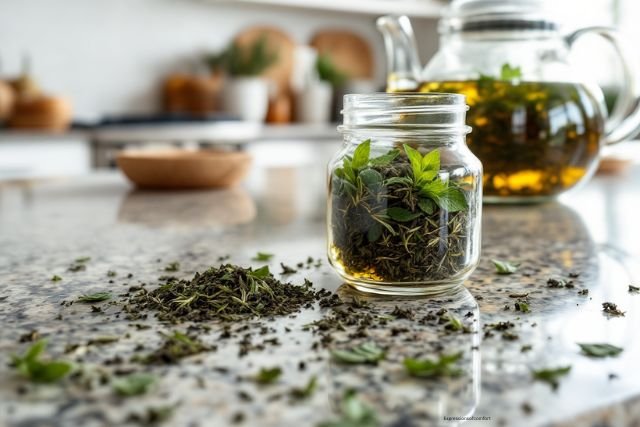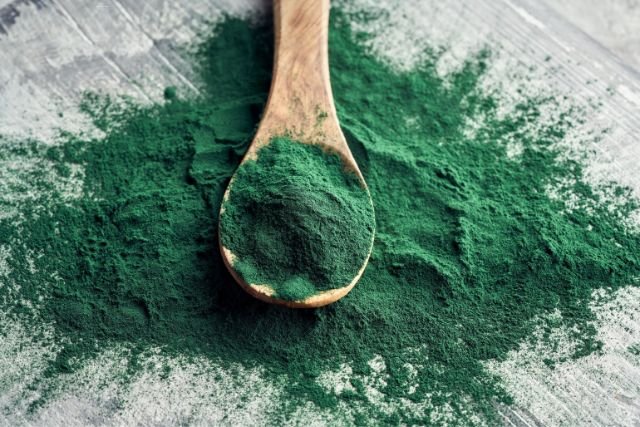Fibromyalgia presents a unique challenge pain, fatigue, and mental fog often weave themselves into every part of life. Those living with this chronic condition know how relentless it can be. While many turn to conventional treatments, a rising wave of fresh research in 2025 is shining a light on powerful natural allies: peppermint and rosemary. These botanical wonders offer more than just a delightful scent or a flavorful addition to your evening meal. They may hold the key to managing fibromyalgia pain with fewer side effects, more control, and perhaps, a little hope.
This guide will take you on an informative journey through the new science behind peppermint and rosemary, actionable ideas for daily routines, and the role these botanicals play in a broad well living strategy. You’ll also discover insights, stories, and practical suggestions all rooted in the latest research and designed to help you move forward, one day and one breath at a time.
Fibromyalgia: Unraveling the Mystery
Before diving into the world of herbs, it’s helpful to understand the basics of fibromyalgia. This complex condition is widely recognized for its chronic, widespread pain, often accompanied by sleep disturbances, persistent exhaustion, and difficulties focusing. It doesn’t just target one part of the body; instead, it’s like a symphony of discomfort played in various keys and chords across your muscles and joints.
Scientists haven’t yet pinpointed the exact cause of fibromyalgia. However, current research suggests it’s related to a mix of heightened pain perception, genetic tendencies, stress, and lifestyle factors. Flare ups can be unpredictable, often triggered by stress, lack of sleep, or even changes in the weather. Since there’s no definitive cure, most people rely on symptom management, which often means chasing after potential relief.
Traditional Treatments Meet Their Limits
Conventional medicine has made significant strides, but it doesn’t always provide comprehensive relief. Medications like pain relievers, antidepressants, and anticonvulsants are commonly prescribed. However, many people experience incomplete symptom relief or unwanted side effects. Furthermore, the pros and cons of long term drug use have prompted many to search for additional ways to manage symptoms especially those that empower them to take charge of their health.
This yearning for effective, gentle, and sustainable relief is fueling the ongoing exploration of nature’s plant based toolkit. In 2025, forward thinking researchers and wellness seekers alike are rediscovering what ancient wisdom knew: peppermint and rosemary are more than just flavorful kitchen staples they’re potential game changers for pain and comfort.
The Plant Powerhouse Duo: Peppermint and Rosemary
Let’s tap into the science, history, and practical possibilities of peppermint (Mentha piperita) and rosemary (Rosmarinus officinalis). These herbs have played roles in healing traditions for centuries but only recently have their fibromyalgia applications come under the scientific lens.
Peppermint: More Than a Fresh Scent
How Peppermint Supports Comfort
Peppermint is widely known for its invigorating fragrance and cooling sensation. Its essential oil boasts menthol as a key player. When applied to the skin, menthol interacts with cold sensitive receptors, producing a gentle cooling effect that distracts from underlying pain signals. But that’s just the beginning.
Recent studies suggest that peppermint oil may relax muscles, improve mental alertness, and even ease headaches common complaints among those with fibromyalgia. Its anti-inflammatory, antispasmodic, and analgesic properties can be especially helpful for people seeking natural alternatives to ease muscle tension and nerve pain.
2025 Research Spotlight
The scientific community is abuzz about peppermint’s potential. Recent animal and pilot human studies demonstrate that topical peppermint oil reduces inflammation and calms nerve signals that transmit pain. When combined with other botanicals, it works even better.
One of the more promising breakthroughs involves nanoemulsions a method of blending peppermint oil into ultra fine droplets for even absorption. This technique is showing better pain reduction, increased antioxidant activity, and a noticeable decrease in tissue inflammation, particularly compared to control groups. No skin irritation and no worrisome changes in safety profiles have been noted.
Peppermint for Mind Body Synergy
Peppermint’s crisp aroma also provides mental clarity and alertness. For those fighting fibromyalgia fog, a little whiff of peppermint might help clear the way forward during tough afternoons. Peppermint tea, meanwhile, is soothing and can help with digestive issues often an overlooked aspect of fibromyalgia comfort.
Rosemary: Aromatic Relief with a Robust Heritage
What Makes Rosemary Special
Rosemary has roots in ancient healing and mythology, representing memory, focus, and even love. Today, rosemary essential oil plays a major role in pain management. Key active compounds such as 1,8-cineole, camphor, and alpha-pinene deliver both anti-inflammatory and analgesic effects.
When applied to aching muscles, rosemary is known to improve circulation, reduce spasm, and relieve stiffness three big troublemakers in fibromyalgia.
New Research Unveiled
Like peppermint, rosemary is climbing the ranks as a botanical powerhouse for pain management. The latest studies highlight rosemary’s effectiveness in nanoemulsion formulations. When blended with peppermint oil, the duo outperformed standard topical treatments, leading to improved antioxidant defenses and better pain scores.
Additionally, clinical insights reveal rosemary’s ability to dampen inflammatory pathways in both neurogenic and musculoskeletal pain models. Patients using rosemary based ointments reported enhanced physical function and diminished pain, making it a top pick for anyone seeking more than fleeting relief.
Science Meets Story: Putting Research to Work in Everyday Life
Real relief comes from blending research with real world adaptability. Here’s how peppermint and rosemary can fit naturally into a fibromyalgia management routine.
Topical Magic: Creams, Gels, and Oils
Opt for high quality, pure essential oils blended safely with a carrier oil (like coconut or almond). A few drops of peppermint and rosemary oil can transform a bland massage oil into a soothing powerhouse. Massage gently over sore muscles and joints to harness a cooling, comforting, and circulation boosting effect. Many new products launched in 2025 use nanoemulsion technology for enhanced absorption and effect.
Pro Tip: Do a patch test first to rule out any sensitivities.
Herbal Rituals for Sore Days
Brew peppermint tea for digestive comfort. Add a sprig of fresh rosemary to your meals or make rosemary tea for an aromatic herbal lift. Not only do these herbs deliver support physically, but their scents and routines bring a sense of ritual and predictability to unpredictable days.
Bath Time Bliss
Adding several drops of pure essential oils to a warm bath can help release muscle tension and soften discomfort. Try blending both peppermint and rosemary for the full spectrum of relief. Plus, the heat, aroma, and water immersion contribute to relaxation and gentle self-care practices.
Mindful Aromatherapy
Harness the mental focus and stress-soothing benefits of these oils through aromatherapy. A few drops in a diffuser, on a lava stone bracelet, or even inhaled carefully from a tissue may ease mental and physical strain.
Broader plant based approaches: 2025 & Beyond
While peppermint and rosemary are in the research spotlight, other herbs remain important companions. Turmeric, ginger, ashwagandha, and valerian root appear in new studies for their anti-inflammatory, pain relieving, and calming effects on fibromyalgia. Integrating these botanicals might offer greater synergy and holistic support.
Magnesium rich herbal infusions, such as nettle, can help with muscle cramps, while omega-3-rich foods may provide systemic anti-inflammatory support. Combining these with a routine of peppermint and rosemary creates a strong foundation for resilience and comfort.
Fresh Ideas and Innovations: What’s New
A new era of fibromyalgia care is dawning with technology driven and plant powered solutions:
- Nanoemulsion Formulas: Topical gels designed for deep, even absorption are reaching more shelves and clinics, providing sustained and targeted pain control without systemic side effects.
- Aromatherapy Wearables: Discreet aromatherapy jewelry infused with peppermint and rosemary helps people find portable relief throughout busy days.
- Personalized Herbal Kits: Tailor made blends based on genetic, lifestyle, and pain profiles are now easier to access, giving people customized options for natural support.
Additionally, multidisciplinary approaches blending physical therapy, mindfulness, and nutrition embrace these botanicals as supportive agents rather than standalone “cures.” The emphasis is on personalization, sustainability, and listening to your body, all driven by ongoing scientific research.
Integrating Herbs Into a Supportive Routine
Creating a pathway to comfort and vitality often means exploring new tools and strategies. Here are some actionable steps:
Simple Steps to Start
- Consult your provider, especially if taking other medications.
- Choose reputable, third party tested oils or supplements.
- Start small, with patch tests, lower dosages, or milder concentrations.
- Listen to your body and adjust as needed.
Layering Strategies for Symptom Support
- Combine herbal remedies with gentle exercise like stretching, water therapy, or mindful movement to support flexibility and strength.
- Pair botanical routines with practices like guided meditation, deep breathing, and consistent sleep patterns for improved wellbeing.
- Integrate emotional and community support lean on friends, professionals, and online communities for encouragement.
Frequently Asked Questions
Are peppermint and rosemary safe for everyone?
Generally, they’re well tolerated. However, those who are pregnant, breastfeeding, or managing certain chronic health conditions should seek guidance before integrating concentrated oils or supplements into their routine. Allergies and sensitivities can develop at any time, so caution is key.
Do these herbs interact with medications?
Some herbal products can affect how other medications work. It’s wise to consult a healthcare professional to avoid any unwanted interactions. This is especially important when using prescription medications for pain or mood stabilization.
How quickly might someone expect results?
Response varies. Some notice improvement within days, others after a few weeks of consistent use. The key is patience and adjusting strategies to fit individual needs and preferences.
Beyond the Herbs: Holistic Pathways to Resilience
Peppermint and rosemary are potent allies, no question. But the journey toward fibromyalgia wellness doesn’t have to rest solely on these two plants. Modern care emphasizes spreading your bets nutrition, gentle movement, mindfulness, supportive therapy, and restful sleep go hand in hand with botanical strategies.
Creative therapists are now employing technologies like virtual reality for distraction during pain, and biofeedback for learning body awareness and resilience. Community acupuncture, group yoga, and aquatic therapies are flourishing and offer supportive, options for enhanced comfort.
The New Frontier: Empowerment and Adaptation
Fibromyalgia may persist, but the landscape of health and healing is vibrant and always growing. With peppermint and rosemary leading the charge in the plant-based revolution, people now have more tools than ever to soothe sore muscles, support emotional wellbeing, and regain control from chronic pain.
Nature’s gifts are abundant. With the right research, a dash of curiosity, and a pinch of courage, even those navigating the daily challenges of fibromyalgia can find new possibilities, personalized solutions, and moments of joy each step along the way.
So, why not turn over a new leaf literally and figuratively? Whether starting with a cup of tea, a mindful massage, or a new blend of essential oils, the path to comfort may be just a herb and a hopeful heart away.










